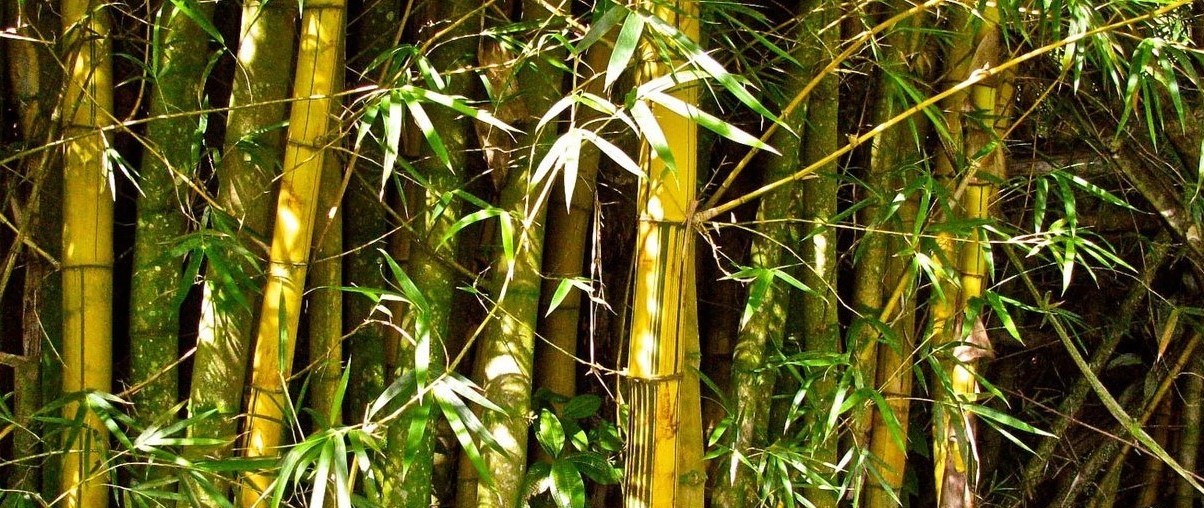
Bambusa, also known as bamboo, is a fascinating plant that has captivated the human imagination for centuries. With its tall and sturdy stalks, lush green foliage, and versatile uses, bambusa has become an integral part of various cultures around the world. From construction to culinary arts, this plant has found its way into countless aspects of our daily lives.
In this article, we will explore 17 fascinating facts about bambusa that shed light on its importance, versatility, and unique characteristics. Whether you’re a nature enthusiast, a gardener, or simply curious about this incredible plant, prepare to be amazed by the wonders of bambusa!
Key Takeaways:
- Bambusa, also known as bamboo, is a versatile and fast-growing plant with over 1,600 species. It’s used for construction, furniture, medicine, and even as a food source for pandas.
- Bambusa plays a crucial role in the environment by reducing carbon dioxide levels, improving air quality, and preventing soil erosion. It’s a symbol of strength and resilience, with various practical and cultural applications.
Bambusa belongs to the grass family.
Bambusa, commonly known as bamboo, is a member of the grass family Poaceae. It is one of the fastest-growing plants on Earth.
There are over 1,600 species of Bambusa.
With a wide variety of species, Bambusa can be found in various climates and regions around the world. Each species has its own unique characteristics.
Bambusa is incredibly versatile.
Bambusa has numerous applications, including construction, furniture making, paper production, and even as a food source in some cultures. Its strength, flexibility, and sustainability make it a highly valued material.
Bambusa is the fastest-growing plant on Earth.
Some species of Bambusa have been known to grow up to three feet in just 24 hours. This rapid growth makes it a highly renewable resource.
Bambusa is an excellent source of timber.
The strong and durable nature of Bambusa makes it a sought-after material for construction and woodworking. It has a higher tensile strength than many alloys of steel.
Bambusa can reduce carbon dioxide levels.
Bambusa plays a significant role in carbon sequestration, absorbing more carbon dioxide and releasing more oxygen than most other plants. This makes it an important ally in fighting climate change.
Bambusa has medicinal properties.
Some species of Bambusa have been used in traditional medicine for various purposes, such as treating fevers, respiratory conditions, and intestinal problems.
Bambusa is highly adaptable to different soil conditions.
While some plants require specific soil compositions to thrive, Bambusa can grow in a wide range of soils, from sandy to clayey, as long as there is sufficient drainage.
Bambusa is a symbol of strength and resilience.
In many cultures, Bambusa is associated with qualities like endurance, strength, and flexibility. It is often seen as a symbol of overcoming hardships and bouncing back in the face of adversity.
Bambusa can be used for erosion control.
The extensive root system of Bambusa helps stabilize soil and prevent erosion, making it an effective tool in land conservation efforts.
Bambusa can be used for water purification.
Some species of Bambusa have the ability to filter and purify water, making it an environmentally friendly and cost-effective solution for water treatment.
Bambusa is a favorite food of pandas.
Giant pandas primarily feed on bamboo shoots, including Bambusa. These adorable creatures consume large quantities of bamboo every day.
Bambusa can be used as a renewable energy source.
Bambusa biomass can be converted into biofuels, providing a sustainable source of energy that reduces dependence on fossil fuels.
Bambusa has been used for centuries in traditional crafts.
Artisans have been utilizing Bambusa for centuries to create beautiful handicrafts, furniture, and musical instruments. Its versatility and natural beauty make it a favorite material for artistic expression.
Bambusa has a low impact on the environment.
Due to its rapid growth and minimal need for pesticides and fertilizers, cultivating Bambusa has a lower environmental impact compared to many other crops.
Bambusa can improve air quality.
As a fast-growing plant, Bambusa contributes to improved air quality by absorbing pollutants and releasing oxygen, providing a healthier environment.
Bambusa has been used in construction for centuries.
Due to its strength and durability, Bambusa has been a popular material for constructing houses, bridges, and various structures for centuries. Its versatility allows for unique architectural designs.
Conclusion
In conclusion, Bambusa is a truly fascinating plant with a rich history and numerous unique characteristics. From its rapid growth rate to its versatile uses, Bambusa has captivated people around the world. Its ability to provide building materials, serve as a food source, and contribute to the overall well-being of the environment makes it a plant of great importance.Whether you’re an avid gardener, a nature enthusiast, or simply curious about plants, Bambusa offers a world of wonder and discovery. As you continue to explore the world of plants, be sure to keep Bambusa on your radar. Its beauty, resilience, and ecological significance are sure to leave you awestruck.So next time you come across a Bambusa plant, take a moment to appreciate its incredible qualities and remember the remarkable facts you’ve learned. Happy planting!
FAQs
Q: How fast does Bambusa grow?
A: Bambusa is known for its rapid growth rate, with some species capable of growing up to 2 feet per day under ideal conditions.
Q: Can Bambusa be grown in colder climates?
A: While Bambusa typically thrives in tropical and subtropical regions, there are cold-hardy species that can withstand lower temperatures and be successfully grown in colder climates.
Q: What are the uses of Bambusa?
A: Bambusa has a wide range of uses, including construction materials, bamboo shoots for food, furniture production, paper making, and even as a renewable source of energy.
Q: Does Bambusa require special care?
A: While Bambusa is generally low-maintenance, it does require regular watering, proper soil drainage, and occasional pruning to maintain its health and shape.
Q: Is Bambusa an endangered species?
A: While certain bamboo species are endangered, the Bambusa genus as a whole is not currently considered endangered. However, conservation efforts are important to protect bamboo ecosystems and ensure their sustainability.
Bambusa's incredible properties make it a fascinating plant to explore. If you enjoyed learning about this grass family member, why not discover the wonders of tropical plants like bromeliads or delve into the beauty of ornamental plants such as Fatsia Japonica? For those interested in eco-friendly options, sustainable materials like yak fiber offer a unique and environmentally conscious choice.
Was this page helpful?
Our commitment to delivering trustworthy and engaging content is at the heart of what we do. Each fact on our site is contributed by real users like you, bringing a wealth of diverse insights and information. To ensure the highest standards of accuracy and reliability, our dedicated editors meticulously review each submission. This process guarantees that the facts we share are not only fascinating but also credible. Trust in our commitment to quality and authenticity as you explore and learn with us.


